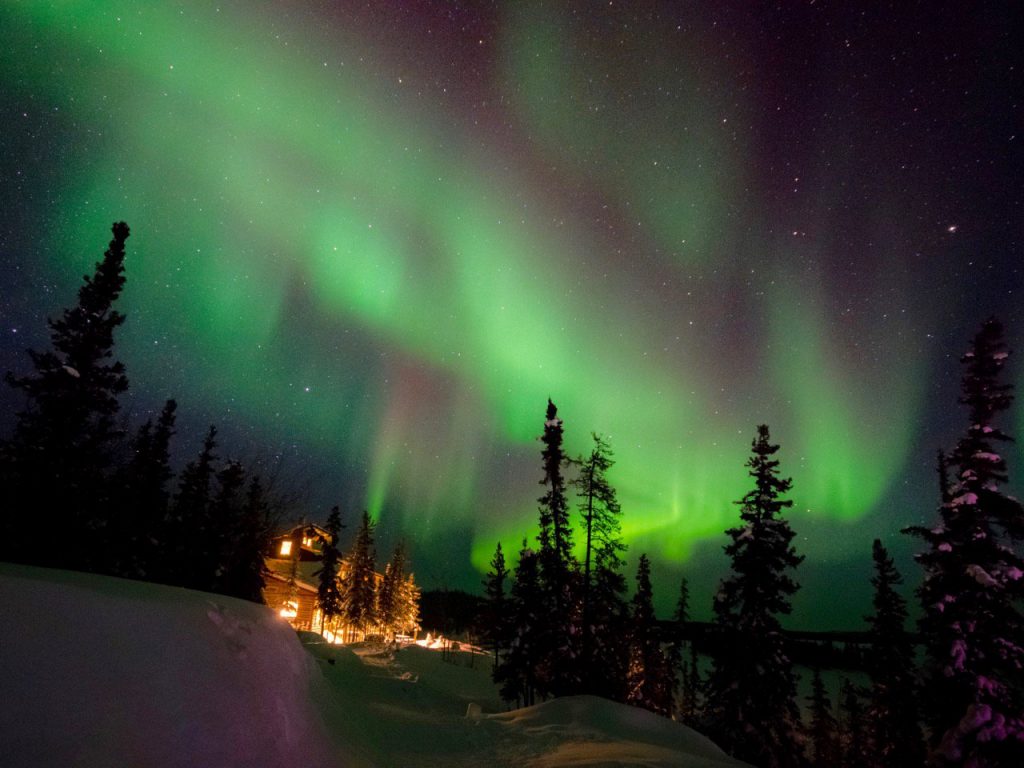On 25 Sep we will welcome back Dr. Melanie Windridge, physicist, writer, lecturer and mountaineer. In the talk “Summiting the Science of Everest” she will tell us the story of her own summit attempt in 2018.
Read more about Dr. Windridge and her passion for travelling under extreme conditions in the Peter Borrows’ report on her previous talk “Aurora – In Search of the Northern Lights” which she gave at the Society meeting on 27 Sep 2017:

AURORA – IN SEARCH OF THE NORTHERN LIGHTS
It’s rare for the Amersham Society to have a talk on a scientific theme but when local scientist and traveller Dr Melanie Windridge spoke about Aurora – In Search of the Northern Lights she held a packed audience spell-bound, writes Peter BorrowsAs a plasma physicist, with a PhD from Imperial College, she was secure in her science but it was dropped in a bit at a time, not to overwhelm the non-scientists present (most of the audience). She debunked some erroneous explanations and who can forget her demonstration of the Tai Chi model of the solar wind?
Melanie is not a theoretical physicist. She believes in going out into the field to see the aurora as they happen, and is young enough to enjoy it; although field is the wrong word for where she has travelled: Sweden, Norway, Iceland, across Canada with its network of observatories – even Scotland. Her talk was full of travellers’ tales. She told of sitting in a barrel in Sweden, with a clear view of the sky but protected from the wind; and trekking across Icelandic lava deposits – “The black grit gets everywhere!”. A reindeer herder told her that the aurora was an effective baby-sitter: “If you don’t behave, the aurora will come and get you!” and she talked about aurora’s place in Danish and Alaskan folklore and in the diaries of Scott and Nansen. She gained our admiration for her account of skiing across Svalbard during the arctic winter, in temperatures of -40°C. At that temperature, everything is frozen, you are in pain all day and even her beloved aurora could not tempt her out of the tent for more than a minute or so.
The aurora is an example of the 4th state of matter (after solids, liquids and gases), a plasma, gaseous atoms that have lost their electrons. Aurora is seen about 100 km above the earth’s surface, whereas weather (clouds!) are no more than 20 km above, so you can only see the northern lights if it’s a clear night. The aurora is not very bright so it is blotted out by a full moon. Photographs (including those shown here) are misleading because the camera, with exposures of perhaps 30 seconds, is much more sensitive than the naked eye.
The sun’s surface is a seething mass of twisted magnetic loops. As magnetic fields can’t cross, from time to time this results in a coronal mass ejection – a stream of charged particles (mostly protons and electrons). This would not be good news for us if the earth were not protected by its own magnetic field, which acts as a shield to deflect the solar wind around the earth. Contrary to most published explanations of the aurora, it’s not as simple as saying that it results from the solar wind’s effect on atoms in the earth’s upper atmosphere – after all, we see the aurora at night, when we are looking in the opposite direction to the sun. In effect, the particles comprising the solar wind are deflected around the earth, the magnetic field lines are forced together, snap and re-join, releasing energy. The energetic particles collide with (mainly) nitrogen and oxygen atoms in the upper atmosphere, promoting their electrons to higher energy levels. As the electrons drop back the energy is released again, in the form of light of particular wavelengths. The colour (wavelength) depends on the size of the energy jump: blue requires a big jump, green less and red least but red is harder to see – our eyes are less sensitive to red. In effect, the colours are produced in a similar way to those you may see in neon signs, or the flame tests you did at school. Only when there is a high level of activity is the red intense enough to be seen at all. Imagine a green curtain, hanging from a red curtain rod. At times of high activity, the aurora may be seen much further south than usual in the northern hemisphere, but then it is the red that is seen. This is because the aurora that is seen is happening high in the sky above the polar regions, but the further from the poles you get the curvature of the earth effectively hides the green curtain but not the red curtain rod.
Although the earth’s magnetic field gives us some protection from coronal mass ejections, at times of high activity – and thus spectacular aurora – they can cause significant problems to our technologically-based society. Radio communications can be blacked out, GPS can become less accurate (a problem not just for car drivers but, for example, for drilling companies) and satellites may be damaged. Perhaps worst of all, high currents may be induced in power lines leading to power cuts. With reasonable forecasts the worst effects can be mitigated: hence space weather forecasting is now an important global collaboration.
Melanie self-evidently enjoys travelling, even (especially?) under extreme conditions, meeting people there and hearing their stories. It was entertaining to hear someone who was so enthusiastic about her subject and skilled at communicating it. Dr Windridge is a wonderful role model for girls to aspire to.
Peter Borrows
January 2018 Newsletter
